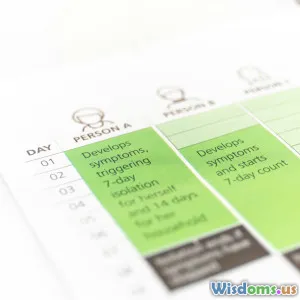
Effective Writing Tips for SEO Friendly Content
6 min read Unlock the secrets of crafting SEO-friendly content with practical writing tips to boost your online visibility and engagement. (0 Reviews)
Effective Writing Tips for SEO Friendly Content
In the digital age, creating high-quality content is essential for capturing audience attention and enhancing online visibility. However, merely writing well is not enough; your content must also be optimized for search engines to reach its full potential. This article delves into effective writing tips that ensure your content is both engaging for readers and friendly to search engines.
1. Understand Your Audience
Before you start writing, it’s crucial to know who your audience is. Understanding their interests, needs, and pain points will help you create content that resonates with them. Conduct surveys, analyze website analytics, or use social media insights to gather information about your audience.
2. Conduct Keyword Research
Keywords are the backbone of SEO-friendly content. Utilize tools like Google Keyword Planner, SEMrush, or Ahrefs to identify relevant keywords related to your topic. Focus on long-tail keywords as they are less competitive and more likely to convert. Incorporate these keywords naturally into your writing without compromising readability.
3. Craft Compelling Headlines
Your headline is the first impression your content makes on potential readers. It should be catchy, informative, and include your main keyword. A compelling headline not only attracts clicks but also improves your content's SEO. Use numbers, questions, or emotional triggers to make your headlines stand out.
4. Use Subheadings and Bullet Points
Break up your content with subheadings and bullet points to enhance readability. Not only does this make your content more scannable for readers, but it also helps search engines understand the structure of your article. Use H2 and H3 tags for subheadings to improve your SEO further.
5. Optimize Meta Tags
Meta tags, including title tags and meta descriptions, are critical for SEO. Your title tag should be concise, include your target keyword, and reflect the content of your article. The meta description should summarize your content and entice readers to click. Keep it under 160 characters to ensure it displays fully in search results.
6. Incorporate Internal and External Links
Linking to relevant internal pages helps search engines understand the context of your content and keeps readers on your site longer. Additionally, external links to reputable sources enhance the credibility of your article. Aim for a balanced mix of both types of links.
7. Write for Readability
While SEO is important, remember that your primary audience is human. Write in a clear, conversational tone and avoid jargon. Aim for a reading level that matches your audience. Tools like Hemingway and Grammarly can help evaluate the readability of your content.
8. Use Images and Alt Text
Images enhance engagement and can improve SEO when used correctly. Include relevant images and optimize them by using descriptive file names and alt text that incorporates your target keywords. This not only improves accessibility but also helps search engines index your content better.
9. Keep Content Fresh and Updated
Search engines favor fresh content. Regularly update your existing articles with new information, updated keywords, or improved readability. This practice signals to search engines that your site is active and relevant.
10. Analyze and Adjust
Finally, use analytics tools to track the performance of your content. Pay attention to metrics such as bounce rate, average time on page, and conversions. Adjust your writing strategy based on these insights to continually improve your content’s effectiveness.
Conclusion
Creating SEO-friendly content requires a balance between writing for readers and optimizing for search engines. By understanding your audience, utilizing keyword research, and following the tips outlined in this article, you can craft compelling content that ranks well and engages your audience. Remember, the ultimate goal is to provide value to your readers while achieving visibility on search engines. Happy writing!
Rate the Post
User Reviews
Popular Posts





















